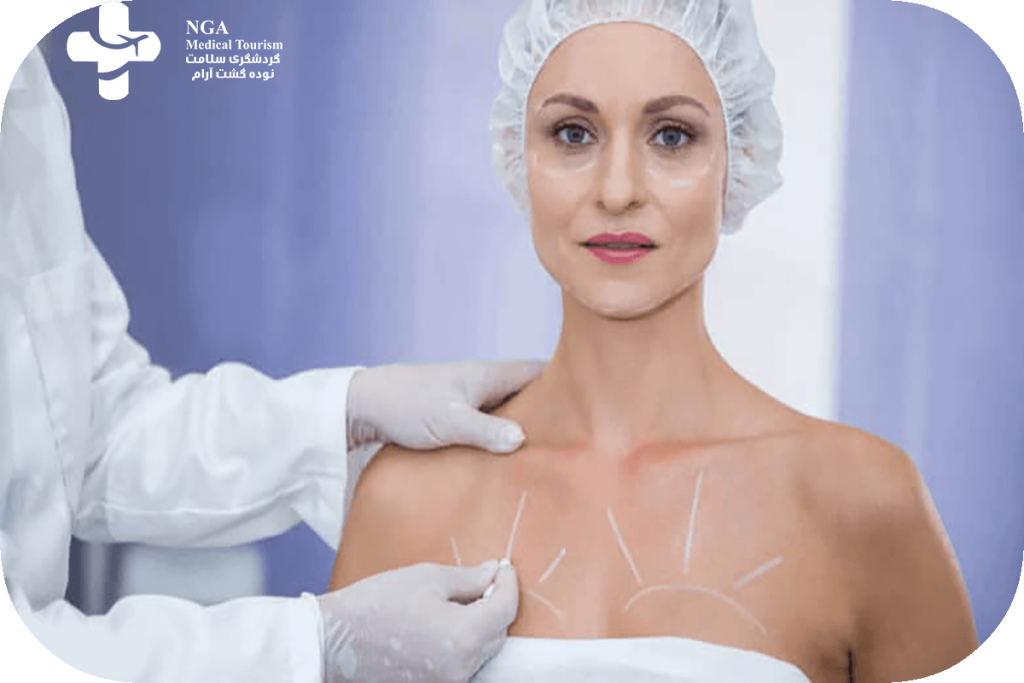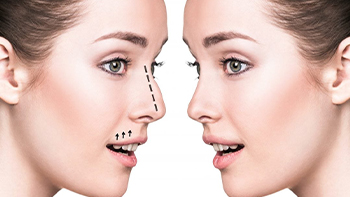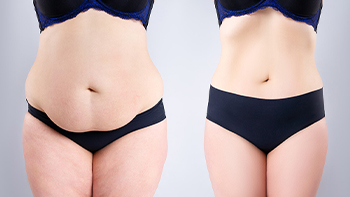All Departments
- Aortic valve stenosis (Aortic stenosis)
- arteriovenous malformations
- Avascular Necrosis
- Best cosmetic dentistry in Iran| Dental Treatment in Iran
- Breast Augmentation in Iran|Breast implant in iran
- Breast Reduction surgery
- Cancer in Iran: oncology in Iran
- Cardiology
- Cataract surgery in Iran
- Cochlear Implant Surgery in Iran
- Cosmetic Laser
- Cosmetic Surgery
- Ear cosmetic surgery
- Eye Care
- Eyelid surgery (Blepharoplasty)
- General Heart Surgery in Iran
- General surgery in Iran
- Glaucoma Treatment In Iran
- Hair Transplant
- Heart valve surgery
- lasik Eye Surgery
- Liposuction
- Non-Surgical Cosmetic procedures in iran
- Organ Transplantation in Iran
- Orthopedic
- Paget disease of bone
- Pediatrics
- Plastic surgery
- Psychiatry
- Radiology
- Rhinoplasty surgery in iran
- Shoulder Replacement Surgery
- SkinCare Treatment
- Spinal cord injury
- urolithiasis procedure in iran
- Urology
- Varicocelectomy
Opening Hours

Breast Reduction surgery


Choosing Iran for breast reduction surgery, also known as Breast Reduction in Iran, offers a compelling combination of affordability, expertise, and modern healthcare infrastructure. Renowned for its highly skilled surgeons who have received international training, Iran provides cost-effective options for patients seeking quality care. The country’s advanced medical facilities, adherence to strict safety standards, and comprehensive pre-and postoperative care ensure a safe and successful surgical experience. Additionally, Iran’s burgeoning medical tourism industry provides seamless support for international patients, making it an attractive destination for those seeking breast reduction surgery with a focus on both quality and cost-effectiveness.
Breast Reduction surgery in Iran
Breast reduction surgery, also known as reduction mammoplasty, is a surgical procedure designed to reduce the size and reshape the breasts. This procedure is often chosen by individuals with excessively large breasts who experience physical discomfort, pain, or emotional distress due to their breast size.


Ipdtourism is your trusted partner for all your breast reduction surgery needs in Iran. Our dedicated team specializes in providing comprehensive and hassle-free solutions for international patients seeking top-quality breast reduction procedures. From the moment you decide to embark on your breast reduction surgery journey to the successful completion of the procedure, Ipdtourism takes care of every detail.
Breast Reduction surgery is a surgical procedure that reduces the size and volume of the breasts. It involves removing excess breast tissue, fat, and skin to achieve a more proportionate and comfortable breast size. The surgery aims to alleviate physical discomfort, improve mobility, and enhance body proportions.
Reduction mammoplasty, commonly known as breast reduction surgery, is a surgical procedure designed to reduce the size and volume of the breasts. It is performed to address various concerns related to excessively large or heavy breasts, including physical discomfort, pain, and emotional self-consciousness.

Consultation and Communication
Schedule a consultation with a qualified plastic surgeon specializing in breast reduction. Node Gestur Aram is with you in this field.
Medical Evaluation
Your surgeon may request a thorough medical evaluation, including a physical examination, breast imaging (such as mammography or ultrasound), and blood tests.
Medication Adjustment
Follow your surgeon’s guidance on medications and supplements. Some, like blood thinners or specific herbal supplements, may require temporary discontinuation before the procedure to reduce the risk of bleeding or complications.
Lifestyle Adjustments:
It is advisable to make certain lifestyle adjustments before the surgery. Quitting smoking, if you are a smoker, is highly recommended as it can impair healing and increase the risk of complications.
Arrange Support:
Breast reduction surgery involves a recovery period during which you may require assistance with daily activities.
Plan for Recovery:
Prepare your home for a comfortable recovery. Stock up on essential supplies such as loose-fitting clothing, extra pillows for elevation, ice packs, and any prescribed medications.
Follow Preoperative Guidelines:
Your surgeon will provide specific preoperative guidelines to follow. This may include instructions on fasting before the procedure, restrictions on eating or drinking, and guidance on showering or skincare before the surgery.
Clear Communication:
Maintain open and clear communication with your surgeon and their team.
Breast reduction Procedure
Breast reduction surgery involves several key steps: It begins with a consultation with a plastic surgeon to discuss goals and medical history. The procedure is performed under general anesthesia to ensure the patient is asleep and pain-free. The surgeon then makes specific incisions (anchor, lollipop, or donut patterns) on the breasts. Excess breast tissue, fat, and skin are removed, and the remaining tissue is reshaped to achieve a smaller, lifted breast contour. Repositioning of the nipple-areolar complex follows, and incisions are closed with sutures or surgical adhesive. Post-surgery, patients receive instructions for pain management, wound care, and wearing a supportive bra or compression garment. Follow-up visits are crucial for monitoring healing, removing stitches if necessary, and addressing any concerns.


Advantages of Breast Reduction in Iran
Undergoing a breast reduction procedure offers numerous advantages. It provides substantial physical relief by alleviating chronic pain in the back, neck, and shoulders, improving posture, and enhancing comfort during physical activities. Additionally, breast reduction significantly enhances the quality of life, boosting self-esteem and body confidence with a more proportionate breast size and greater comfort in clothing choices. It also restores functionality by eliminating restrictions on physical activities, positively impacting psychological well-being by reducing self-consciousness and enhancing self-esteem. Moreover, it expands clothing options, potentially brings health benefits like reducing the risk of skin issues, and facilitating breast self-examinations and mammograms.
Breast Reduction Risks
Breast reduction surgery, like any surgical procedure, comes with certain risks and limitations. These include the potential for visible scarring, changes in nipple or breast sensation (temporary or permanent), the risk of infection and excessive bleeding, the possibility of slight unevenness or asymmetry in breast size or shape, potential challenges with breastfeeding, and the chance that the results may not fully meet expectations. However, it’s important to note that complications are relatively rare when the surgery is performed by an experienced plastic surgeon who takes precautions to minimize these risks. Patients should also have open communication with their surgeon to manage expectations and address any concerns.


Recovering from breast reduction surgery typically entails an initial 1 to 2-week period marked by swelling, bruising, and discomfort, managed with prescribed pain medication. Patients should diligently follow postoperative care instructions, including wound care and wearing a supportive bra or compression garment. Expect swelling and bruising to gradually diminish. Strenuous activities, heavy lifting, and chest-straining exercises should be avoided for several weeks. Regular follow-up appointments with the surgeon are essential for monitoring healing and addressing concerns. Scar management instructions, such as using topical ointments or silicone sheets, may be provided. Patients should gradually return to normal activities following their surgeon’s guidance and their body’s cues.
An ideal candidate for breast reduction surgery typically possesses certain key traits: They have disproportionately large breasts in relation to their body frame, leading to physical discomfort, including chronic pain and skin issues. Emotional and psychological distress related to breast size and appearance is often a motivating factor. These candidates also maintain a stable weight, enjoy good overall health, and harbor realistic expectations regarding the surgery’s outcomes, along with an understanding of potential risks and limitations.

Liposuction for breast reduction
Liposuction can be used as a technique for breast reduction in certain cases. It is typically suitable for individuals with good skin elasticity, minimal sagging, and an excess of fatty tissue in the breasts rather than glandular tissue. Liposuction for breast reduction offers several potential benefits, including smaller incisions, less scarring, and a quicker recovery compared to traditional breast reduction surgery.
During the procedure, small incisions are made, and a thin tube called a cannula is inserted to suction out the excess fatty tissue. Liposuction can help reduce breast volume and reshape the breasts to achieve a smaller, more proportionate size. However, it’s important to note that liposuction alone may not address issues such as sagging or asymmetry.
Read More: Rhinoplasty Surgery In Iran
Read More: Revision Rhinoplasty In Iran 2023 | Best Surgeons And Low Cost
Read More: What Is The Best Nose Shape?
Read More: Upturned Nose Surgery In Iran
After breast reduction surgery, you can expect the following:
Recovery period: You’ll need time to recover, usually about 1 to 2 weeks.
Swelling and bruising: Swelling and bruising are common and may take several weeks to subside.
Pain and discomfort: Some pain and discomfort are expected, but medication will be provided to manage it.
Scarring: Scars are permanent but will fade over time.
Restricted activities:You’ll need to avoid strenuous activities and heavy lifting for a few weeks.
Supportive garments: You’ll be advised to wear a supportive bra or compression garment during the healing process.
Follow-up visits: You’ll have follow-up appointments with your surgeon to monitor healing and address any concerns.

Following breast reduction surgery, it may take several months for your breasts to fully heal and for the swelling to subside, making it challenging to determine your final breast size in the initial weeks, during which they may appear swollen and bruised. As time passes, the swelling gradually diminishes, allowing your breasts to assume their ultimate shape and size. Your surgeon can provide an estimate of your post-surgery breast size based on tissue removal and other factors, but individual healing variations mean the actual size may differ slightly from the prediction.
Breastfeeding following breast reduction surgery can be challenging due to the removal of glandular tissue, impacting milk production. The feasibility of breastfeeding post-surgery varies depending on the surgical technique and the extent of tissue removal. Some women may still breastfeed to some extent, while others may not be able to breastfeed at all. Consulting a lactation specialist or healthcare provider for personalized guidance is advisable. Importantly, if breastfeeding isn’t possible, formula feeding is a safe and healthy alternative, providing babies with the necessary nutrition for growth and development.


Liposuction for breast reduction
Liposuction can be used as a technique for breast reduction in certain cases. It is typically suitable for individuals with good skin elasticity, minimal sagging, and an excess of fatty tissue in the breasts rather than glandular tissue. Liposuction for breast reduction offers several potential benefits, including smaller incisions, less scarring, and a quicker recovery compared to traditional breast reduction surgery.
During the procedure, small incisions are made, and a thin tube called a cannula is inserted to suction out the excess fatty tissue. Liposuction can help reduce breast volume and reshape the breasts to achieve a smaller, more proportionate size. However, it’s important to note that liposuction alone may not address issues such as sagging or asymmetry.
Breast reduction and lift
Breast reduction and lift, also known as a breast reduction mammoplasty with lift, is a combined surgical procedure that aims to reduce the size of the breasts while also lifting and reshaping them. This procedure is commonly performed to address both aesthetic concerns and physical discomfort associated with large, sagging breasts.
During a breast reduction and lift surgery, excess breast tissue, fat, and skin are removed, and the remaining tissue is reshaped and lifted to create a more youthful and proportionate breast appearance. The nipple-areolar complex is also repositioned to a higher position on the breast mound.
This combined procedure can improve the overall breast shape and contour, alleviate symptoms such as neck and back pain, and enhance self-confidence. The specifics of the surgery, including the incision pattern and techniques used, will vary depending on the individual patient’s needs and the surgeon’s approach.

Non-Surgical Breast Reduction
breast reduction exercise
Non-surgical breast reduction refers to procedures or treatments that aim to reduce breast size without the need for surgery. While there are non-surgical methods available, it’s important to note that their effectiveness in achieving significant and permanent breast reduction may be limited. Here are some non-surgical options that are sometimes explored:
Weight loss
In cases where the breasts are primarily composed of fatty tissue, losing weight may result in a reduction in breast size. However, this method may not be effective for everyone and may not specifically target breast tissue.
Exercise
Certain exercises, such as chest exercises and strength training, can help strengthen the chest muscles and potentially give the appearance of a lifted and smaller bust. However, exercise alone may not significantly reduce breast size.
Posture improvement
Maintaining good posture can improve the appearance of the breasts by lifting them and making them appear smaller. However, this does not actually reduce breast tissue.
Compression garments
Wearing well-fitting bras or compression garments can provide temporary support and help minimize the appearance of larger breasts. However, this is a temporary solution and does not result in permanent reduction.
It’s important to have realistic expectations when considering non-surgical methods for breast reduction. If you desire a significant and permanent reduction in breast size, surgical breast reduction (reduction mammoplasty) is the most effective and reliable option. It is advisable to consult with a qualified plastic surgeon to discuss your concerns, goals, and determine the most appropriate course of action based on your specific circumstances.

The cost of breast reduction surgery in Iran can vary depending on several factors, including the surgeon’s experience, the geographical location of the clinic, the complexity of the procedure, the type of anesthesia used, and the facilities provided. It’s important to keep in mind that prices can fluctuate over time.
the cost of breast reduction surgery in Iran ranged approximately from $1,500 to $3,500 USD. However, please note that this is a general estimate and may not reflect the current prices.
Anchor or inverted T incision
This incision pattern is commonly used for significant breast reductions. It involves three incisions: one around the areola, a vertical incision from the areola to the breast crease, and a horizontal incision along the breast crease.
Lollipop or vertical incision
This technique involves two incisions: one around the areola and a vertical incision from the areola to the breast crease. It is suitable for moderate breast reductions.
Donut or periareolar incision
This incision encircles the outer edge of the areola. It is used for minor breast reductions or when there is mainly an excess of glandular tissue.
Nodeh Gasht Aram is a renowned medical tourism agency in Iran, known for their exceptional services to international clients at competitive prices. They specialize in facilitating breast reduction trips, ensuring a seamless and hassle-free experience. With their solid reputation, choosing Nodeh Gasht Aram guarantees a smooth journey without any inconveniences. They are committed to providing top-notch service to foreign individuals seeking breast reduction procedures in Iran.
Breast reduction surgery in Iran is a popular and well-established procedure that can help individuals achieve smaller, more proportionate breasts and alleviate associated physical discomfort. The country is known for its skilled plastic surgeons and advanced medical facilities, making it an attractive option for those seeking breast reduction surgery. However, it is essential to conduct thorough research, choose a reputable surgeon or clinic, and ensure proper communication and understanding of the procedure, costs, and post-operative care.
Read More: IVF in Iran
Read More: What Is Ivf Procedure
Read More: Where Is The Cheapest Country For IVF In 2023?
Read More: Ivf Injections
Candidates for breast reduction are individuals experiencing chronic pain, skin irritation, limited physical activity, difficulty finding properly fitting bras and clothes, and negative self-confidence due to excessively large breasts. It is important to consult a doctor if you have specific health conditions, are a smoker, or if your breasts are not fully developed.
It is generally recommended to postpone breast reduction surgery until after you have finished breastfeeding. This is to ensure that the breasts have stabilized in size and shape before undergoing the procedure. Additionally, if you are planning significant weight loss, it may be advisable to reach your target weight before considering breast reduction surgery to achieve more stable and desirable results. It is important to discuss your specific circumstances with a qualified plastic surgeon who can provide personalized recommendations based on your individual needs and goals.
Reduction mammoplasty, or breast reduction surgery, does leave scars. The extent and appearance of the scars can vary depending on the surgical technique used, the amount of breast tissue and skin removed, and individual healing factors.
Commonly used incision patterns for breast reduction surgery include the anchor or inverted T incision, lollipop or vertical incision, and donut or periareolar incision. These incisions result in scars, with the anchor or inverted T incision typically leaving the most extensive scarring.
Over time, the scars from breast reduction surgery generally fade and become less noticeable. The healing process is unique to each individual, and factors such as genetics, skin type, and scar care can influence the final appearance of the scars.
To help minimize scarring, it’s important to follow your surgeon’s post-operative care instructions, which may include keeping the incisions clean and protected, avoiding sun exposure, and using scar treatment products or techniques as recommended.
While scars are an inherent part of breast reduction surgery, many individuals find that the physical and psychological benefits of the procedure outweigh any concerns about scarring. It’s essential to have a thorough discussion with your plastic surgeon before the surgery to understand the expected incision patterns, resulting scars, and their potential impact on your desired outcome.
Breast reduction surgery typically involves some degree of pain and discomfort during the initial recovery period. The level of pain experienced can vary from person to person and depends on factors such as individual pain tolerance, surgical technique, and the extent of the procedure.
During the first few days after surgery, it is common to experience soreness, swelling, bruising, and discomfort in the breasts. Your surgeon will provide you with pain medication to manage any pain or discomfort during this time. It is important to follow your surgeon’s post-operative instructions and take prescribed pain medications as directed to help alleviate discomfort.
As the healing process progresses, the pain and discomfort usually decrease gradually. Most individuals find that the pain becomes more manageable within the first week or two after surgery. However, it’s important to note that full recovery and resolution of any residual discomfort can take several weeks to months.
It’s important to discuss any concerns or questions about pain management with your plastic surgeon. They can provide you with more specific information about what to expect during the recovery process and offer strategies to help minimize discomfort.
To arrange a breast reduction surgery in Iran, follow these steps:
- Research and identify reputable plastic surgeons or medical centers in Iran that specialize in breast reduction surgery.
- Contact the chosen surgeon or medical center directly to inquire about the procedure, discuss your goals and expectations, and schedule a consultation.
- Make necessary travel arrangements, such as obtaining a visa, arranging accommodation, and coordinating logistics for your stay in Iran during the surgery and recovery period.
Breast reduction surgery is typically recommended for women who have breasts that are disproportionately large in relation to their body size, and who are experiencing physical discomfort or other issues related to their breast size. Some common symptoms of large breasts that may indicate a need for breast reduction surgery include back, neck, and shoulder pain, bra strap grooving, and skin irritation or rashes under the breasts.
In general, Islamic teachings place great emphasis on preserving and maintaining one’s physical health and well-being. If a woman is experiencing physical discomfort or health issues related to the size of her breasts, then seeking medical treatment, including breast reduction surgery, may be considered permissible under Islamic principles.
However, it is important to note that Islamic teachings also place limits on altering one’s physical appearance through cosmetic procedures. If the primary reason for seeking breast reduction surgery is purely cosmetic and not related to physical health, then some Islamic scholars may consider it forbidden or discouraged.
After a breast reduction surgery, it is possible for the breasts to grow back to some extent, but the likelihood and extent of this growth can vary from person to person.
To make your breasts smaller naturally, you can maintain a healthy weight, perform chest exercises, wear a supportive bra, consider wearing compression garments, and avoid estrogen-rich foods. However, these methods may not be effective for everyone and breast reduction surgery may be necessary for some. It’s important to consult with a healthcare provider or plastic surgeon if you have concerns about your breast size.

Breast augmentation
Breast augmentation is a surgical procedure to improve the size and shape of a woman’s breast. This is done by inserting full plants…

Revision weight loss surgery
Revision weight loss surgery, also known as bariatric revision surgery, is a type of surgical procedure that is performed on patients who have previously undergone weight loss surgery

Rhinoplasty revision
Revised rhinoplasty, also known as secondary rhinoplasty, is a surgical procedure performed…

Rhinoplasty in Iran
Nasal plastic surgery, also known as “nose job”, is a surgical procedure that involves changing the shape or size of the nose.

Liposuction
Liposuction is a surgical procedure aimed at removing unwanted fat from certain areas of the body, such as the abdomen and buttocks.

Ear surgery
Ear surgery, also known as ear surgery, is a cosmetic surgery procedure determined to improve the appearance of the ears.

Brazilian butt lift (BBL)
Brazilian butt lift (BBL) is a cosmetic surgery procedure that involves the transfer of fat from one area of the body, such as the abdomen.

Breast removal
Breast lift, also known as breast fixation, is a surgical procedure to remove and reshape the sagging breast.

Beautification of the lips
Labiaplasty is a surgical procedure that involves reducing the size and/or changing the shape of the labia minora.

Skin care
Skin care includes cleansing and exfoliation and the use of creams and medical products…

Laser beauty
Employing laser to treat wrinkles, fine lines, scars, acne, pimples, moles, freckles, and unnatural growth of hair…

Tummy tuck
Tummy tuck, also known as tummy tuck, is a cosmetic surgery procedure determined to improve the appearance of the abdomen by removing…

Hair transplantation in Iran
Hair transplantation is a surgical procedure that involves the transplantation of hair follicles, which are a part of the body, and usually it is the back part of the head.

Reconstructive surgery is performed to correct physical deformities caused by accidents, birth defects, or medical conditions.

Composite veneer
Composite veneer is a type of dental veneer made from composite resin material. The theme of use…

Dental implants
A dental implant is a surgical component placed in the jaw bone to support a dental replacement, such as a crown, bridge, or denture.


